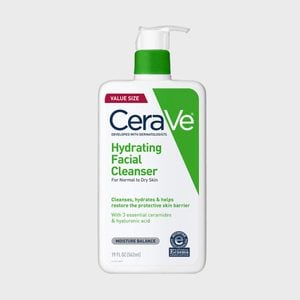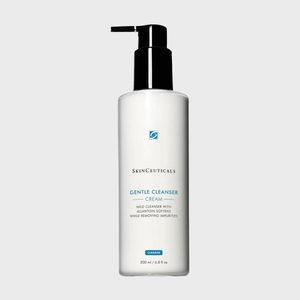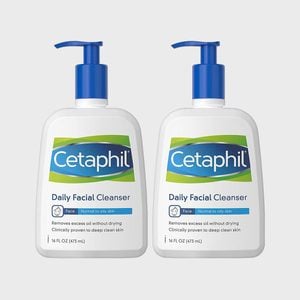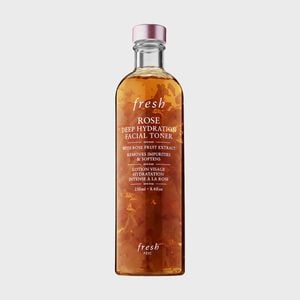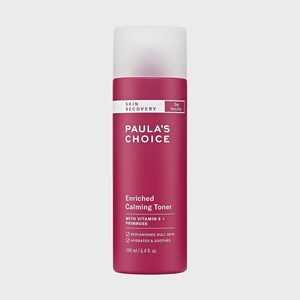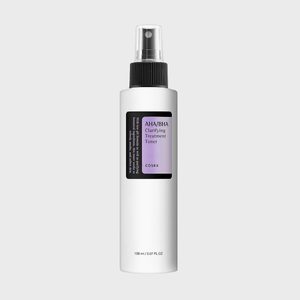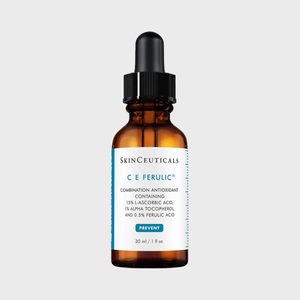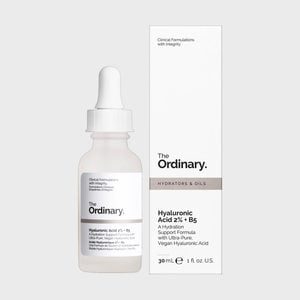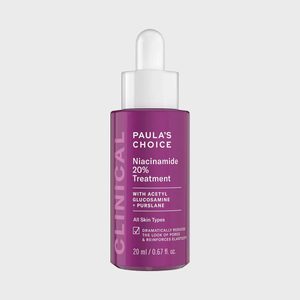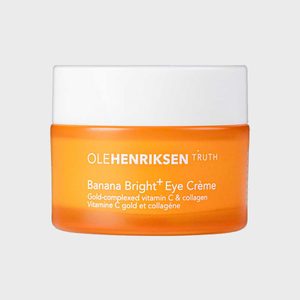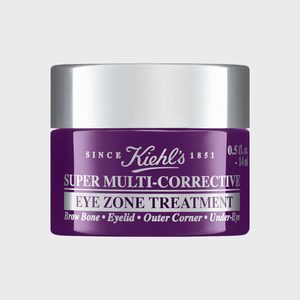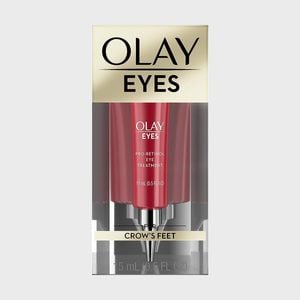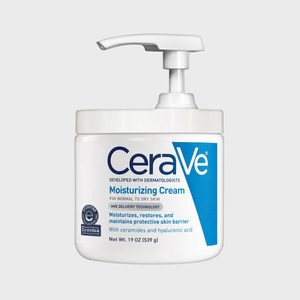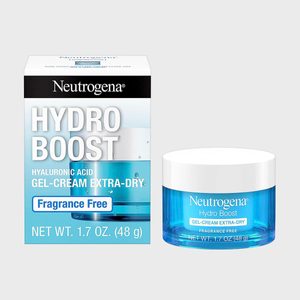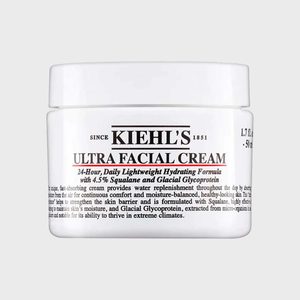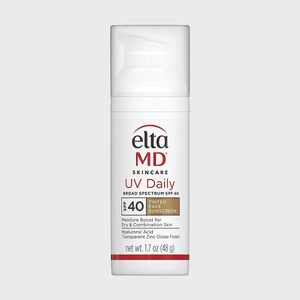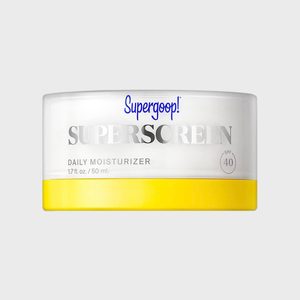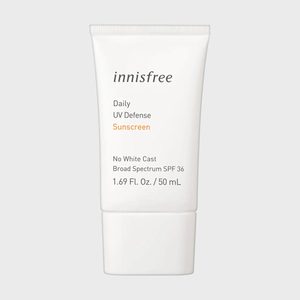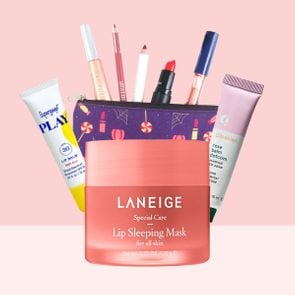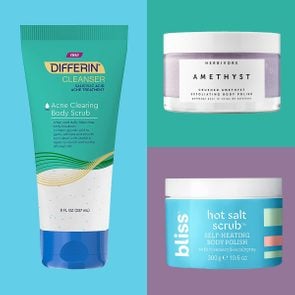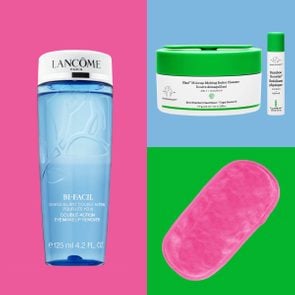The Best Skin-Care Routine, According to Dermatologists
Updated: Mar. 18, 2024
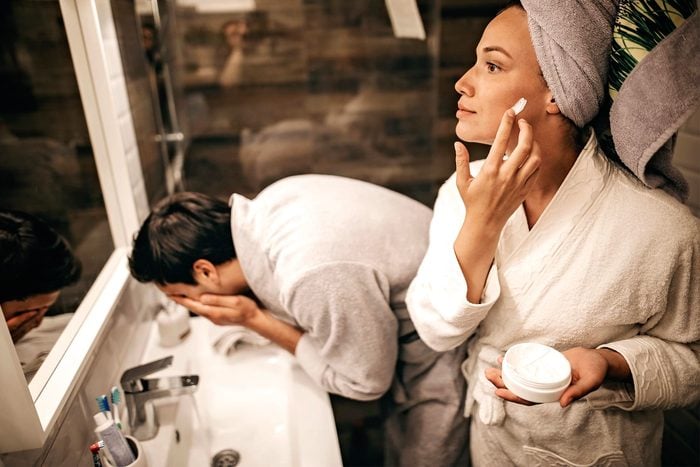
A better complexion starts with a consistent skin-care routine—layered in the right order. Here's our step-by-step guide.
Our editors and experts handpick every product we feature. We may earn a commission from your purchases.
Good skin takes work. It’s a combination of genes, hard-working ingredients, healthy daily habits and building a skin-care routine—in the correct order. You can have the most promising formulations and the best skin-care brands, but if you’re not layering your skin-care products correctly, you could be doing your complexion a disservice, experts say.
Sequence matters … a lot, says Nkem Ugonabo, MD, a dermatologist at Union Derm in New York City. “Some ingredients shouldn’t be mixed together, as they could be too harsh or might inactivate each other,” she says.
Sequence can also affect how well products are absorbed into the skin. “The order that you apply your skin care absolutely makes a difference,” says Mississippi-based dermatologist Lindsey Zubritsky, MD. “Layering incorrectly can lead to decreased efficacy of products, in addition to wasted product or potential skin irritation.”
No matter your skin concerns (whether you’re looking for skin care for men, a skin-care routine for dry skin or a skin-care routine for oily skin), there’s an order to follow for the best results. “In general, you want to apply your products (after cleansing) from lightest to heaviest,” says Dr. Ugonabo. “That means lighter serums first, then heavier creams or moisturizers and then sunscreen last.” Here’s what you need to know about achieving a healthy complexion.
Get Reader’s Digest’s Read Up newsletter for beauty, humor, cleaning, travel, tech and fun facts all week long.
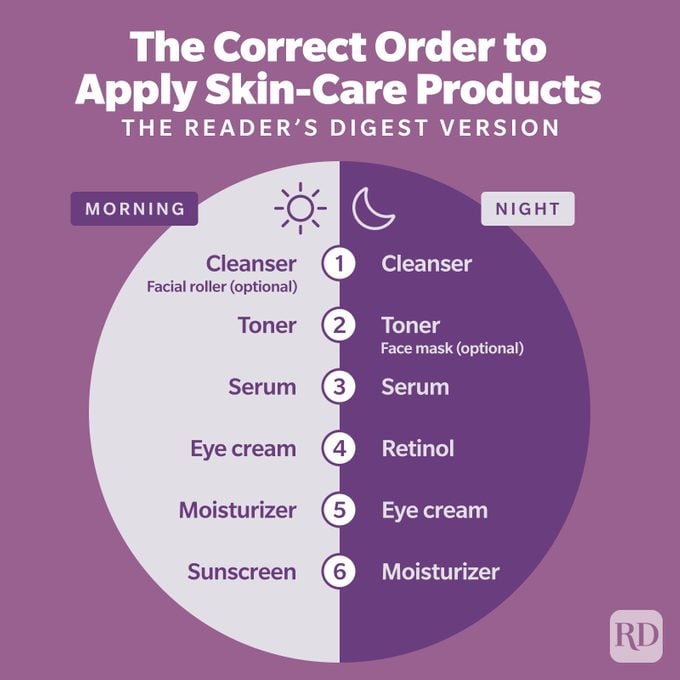
Skin-care routine steps
There are three main necessary steps for any skin-care routine:
- Cleansing
- Moisturizing
- Applying sunscreen
Some people may add additional steps and products to troubleshoot acne, calm inflammation, fade under-eye circles or address other skin concerns, but they’re not required. We’ll show you how to create a six-step skin-care routine that includes a cleanser, toner, serum, eye cream, moisturizer and sunscreen.
The types of products you choose will generally depend on your skin type. All skin types can benefit from a skin-care routine, but different skin types have different needs. While everyone’s skin is unique, looking for certain unifying characteristics can help you determine the product you should reach for.
- Dry skin produces fewer oils and can appear dull and sometimes flaky, textured, rough or itchy. You’ll want to look for gentle, soothing and hydrating ingredients.
- Oily skin produces an excess of oil and can appear shiny, especially through the T-zone, and feel greasy. It may be acne-prone. Look for nourishing or hydrating products that don’t clog pores.
- Combination skin is dry in some areas and oily in others. It can fluctuate depending on the season. It may also vary depending on hormones.
- Normal skin is generally clear and not prone to breakouts. Its texture is generally smooth and is less prone to sensitive spots or blemishes.
- Sensitive skin can be dry, oily or normal. It may sting, burn or be easily irritated after product use or exposure to wind, sun or other environmental stressors.
- Mature skin is starting to show the signs of aging, including fine lines, wrinkles, sun damage and a dull, uneven complexion.
Step 1: Cleanser
When: Day and night
Cleansing should be your first step in the morning and at night, experts say. It’s because you want to start your skin-care routine with a clean slate, and the best cleansers mean business. In the morning, cleansing washes away the sleep, sweat and overnight grime, says Adam Friedman, MD, professor and chair of dermatology at George Washington School of Medicine and Health Sciences in Washington, DC. In the evening, cleansing removes makeup, dirt, grime and residue that has accumulated on your face throughout the day.
For this step, the American Academy of Dermatology suggests using a gentle, nonabrasive cleanser that does not contain alcohol. Be sure to wash your face with warm water, not hot water, which can dry it out. Gently use your hands or a facial cleansing brush. If you’d like the cleanest complexion, consider double cleansing or adding a micellar water. And don’t be too rough in the drying process. Simply pat your skin dry with a clean towel.
Find the best cleanser for your skin type:
- Dry skin: Creamy, mild cleansers. Tiffany Jow Libby, MD, director of dermatological surgery at Brown Dermatology, recommends SkinCeuticals Gentle Cleanser Cream. “It is a non-comedogenic, creamy, mild cleanser that has allantoin and glycerin to hydrate, soften and restore the skin’s moisture barrier.”
- Oily skin: Something with benzoyl peroxide or salicylic acid. “Benzoyl peroxide is antibacterial and unclogs pores to prevent and treat existing acne,” says Dr. Libby. “Salicylic acid helps exfoliate away dead skin cells, remove excess oils and unclog pores.” She recommends PanOxyl Acne Creamy Wash or Vichy Normaderm Daily Acne Face Wash for oily or acne-prone skin.
- Normal skin: Gentle, hydrating cleansers. Dr. Libby recommends Cetaphil Daily Facial Cleanser. “This is a staple that is great for dry or normal to combination or oily skin,” she says. “It uses glycerin to hydrate skin and niacinamide and panthenol to soothe and support the skin’s moisture barrier.”
- Sensitive skin: Gentle cleansers. If your skin is uber-sensitive, reach for Cetaphil Gentle Skin Cleanser, Dr. Libby says. “This is a unique formulation as it can be used with or without water. If very irritated or dry, you can apply the cleanser directly onto a cotton pad and gently clean the skin, wiping away impurities.”
- Mature skin: Mild or gentle cleansers. For aging skin, try Glytone’s Mild Gel Cleanser. “It exfoliates gently while cleansing and helps to shed superficial dead skin cells to reveal brighter and more radiant skin,” Dr. Libby says.
Step 2: Toner
When: Day or night
Anyone who survived the days of alcohol-based toners might cringe at the thought of adding a toner back to their skin-care routine. But toners have undergone a dramatic makeover in recent years, says Joshua Zeichner, MD, director of cosmetic and clinical research in dermatology at Mount Sinai Hospital in New York. Because toners aren’t designed to remove dirt or residue from your skin, you’ll want to apply them right after cleansing.
“Today’s toners are liquid serums designed to deposit a particular active ingredient on the skin,” he says. Traditionally, they were drying, alcohol-based products that led to irritation—big no-nos for people with dry or sensitive skin. These days, toners can be used across many skin types. And while not everyone needs an exfoliant or toner in their skin-care routine, if you choose to use one, you’ll want to find a toner that offers solutions based on your skin’s needs, including hydration, wrinkle reduction or exfoliation. P.S. You might be interested in the Medicube Age-R device—it boosts skin absorption by 490%.
Find the best toner for your skin type:
- Dry skin: Hydration-boosting toners. Look for those with hyaluronic acid (like the Fresh Rose and Hyaluronic Acid Deep Hydration Toner), and make sure they are free of alcohol or witch hazel, which can irritate dry skin.
- Oily skin: Oil-free or non-comedogenic toners. You can also look for key ingredients, such as alpha hydroxy acids (AHA) and beta hydroxy acids (BHA), seen in the CosRX AHA/BHA Treatment Toner. BHAs (salicylic acid, lactic acid and glycolic acid) exfoliate the skin by removing excess oil and dead skin cells, Dr. Zeichner says.
- Normal skin: This is dealer’s choice, says Dr. Zeichner. You can choose any toner you want or skip this step entirely.
- Sensitive skin: Soothing ingredients, such as glycerin, hyaluronic acid, chamomile, aloe or rosewater, as seen in the Paula’s Choice Enriched Calming Toner.
- Mature skin: Antioxidant-rich toners. Look for inflammation-fighting antioxidants, such as vitamin C, or hydrators, such as hyaluronic acid. You can also use exfoliating ingredients that brighten your complexion, such as glycolic acid or skin multi-acids, Dr. Zeichner says.
Step 3: Serum
When: Day and/or night
Once you’ve washed your face and potentially added a toner, it’s time to apply a serum. The best serums deliver concentrated versions of active ingredients to the skin, explains Julius Few, MD, a Chicago-based plastic surgeon. Your serum of choice might include vitamin C, vitamin E, hyaluronic acid, niacinamide or another powerhouse ingredient.
And this is why the order matters: Actives like niacinamide and retinol or antioxidants like resveratrol and vitamin C serums are thinner—some almost watery—compared with thick lotions and creams. Which means they wouldn’t be able to penetrate if you added them after. “The thin, concentrated formula of a serum allows you to give your skin more of what it needs underneath your typical daily products, like sunscreens and moisturizers,” Dr. Few says.
Some actives help boost the production of collagen and elastin, building blocks of healthy, youthful skin. Other active ingredients found in serums may brighten, resurface or clarify. And because you can potentially use more than one serum, make sure to apply the thinnest formulas first.
Find the best serum for you:
- Vitamin C: This potent antioxidant does triple duty, protecting your skin from harsh pollutants, lightening and brightening dark spots and helping to build up collagen stores under the skin’s surface. “Vitamin C is best in the morning, underneath or before sunscreen, because it’s an antioxidant that helps to protect from free radicals and other environmental damage,” says Dr. Ugonabo. People are obsessed with this vitamin C serum in particular.
- Vitamin E: Another powerful antioxidant, vitamin E is often paired with hyaluronic acid or vitamin C in serums and can help cool inflammation, hydrate skin and minimize the appearance of scars. “I recommend it be used in the morning,” Dr. Ugonabo says.
- Hyaluronic acid: A hydrator, hyaluronic acid is a humectant that acts like a sponge to pull water into the top layer of your skin. “This can be used morning or nighttime,” Dr. Ubonabo says. “It shouldn’t interfere with other actives nor should it be affected by the sun.” The Ordinary’s Hyaluronic Acid Serum is a favorite budget-friendly hydration booster.
- Retinol: Retinol is a vitamin A derivative. Some of the best retinol serums are great for fine lines, wrinkles, acne and hyperpigmentation or dark marks. It stimulates collagen and cell turnover and is the best-studied ingredient to fight the appearance of aging, says Dr. Zeichner. And according to George Han, MD, a dermatologist at Northwell Lenox Hill Hospital in New York City, retinol is the most important ingredient to have in your nighttime routine. Because retinoids can be drying, a well-formulated retinol serum will pair it with ingredients that boost hydration and minimize irritation, Dr. Han says. “This is very helpful and should be used at nighttime to minimize concerns around irritation, dryness and photosensitivity.”
- Niacinamide: This vitamin-B derivative is a true multi-tasker, Dr. Zeichner says. “It has skin-soothing, skin-brightening and skin-strengthening benefits on its own and also pairs nicely with retinol or glycolic acid,” he says. “It can be used morning or nighttime.”
Step 4: Eye cream
When: Day and/or night
If you’re concerned about the signs of aging around your eyes or just want to get rid of puffy eyes, eye creams may help. Many of these products have active ingredients, which means they should be applied after cleansing too, says Mona Gohara, MD, a dermatologist in New Haven, Connecticut. When picking an eye cream, look for a product that targets your biggest needs, whether that’s hydration or the best anti-aging eye creams.
Find the best eye cream for you:
- Vitamin C: If you’re worried about discoloration around your eyes, reach for vitamin C eye cream. “It helps lighten and brighten skin and evens skin tone,” Dr. Zeichner says. A fan favorite is the Ole Henriksen Banana Bright Eye Creme.
- Hyaluronic acid: This is for hydration, dark circles or hollowness, says Dr. Zeichner. It also helps firm and brighten the skin around the eyes.
- Retinol: “If your main concern is crepiness around your eyes, choose an eye cream with retinol,” says Dr. Zeichner. Consider the Olay Eyes Pro Retinol Eye Cream.
- Peptides: These are designed to stimulate collagen production. Choose a peptide-based eye cream if you’re concerned about fine lines and wrinkles, as the collagen will help fill from the inside out.
- Caffeine: Have puffy eyes in the morning? Look for an eye cream with caffeine, a potent de-puffer. (Then reach for the best under-eye concealers.)
Step 5: Moisturizer
When: Day and night
This is an important don’t-skip step, Dr. Gohara says. The best moisturizers relieve dry skin, lock in moisture, protect and support your skin’s barrier and minimize some signs of aging. Moisturizer also creates the perfect canvas for applying makeup. And while there is no single-best moisturizer out there, the key is to pick one that best fits your skin type. Have acne-prone skin? You might need a moisturizer for oily skin. Looking to lock in that moisture? Check out the best night creams. Need a super-rich anti-aging cream? Consider ones that include retinol.
“Moisturizer can be applied at various times during the day, but I often recommend doing so in the morning before your sunscreen and in the evening after using a retinol/retinoid,” says Dr. Ugonabo.
Find the best moisturizer for your skin type:
- Dry skin: Reach for a heavier cream, balm or ointment that is thicker and more likely to add more moisture and preserve more water than lotion, like the natural Weleda Skin Food or the Dieux Instant Angel Skin Restoring Moisturizer.
- Oily skin: Remember that just because you have oily skin does not mean you don’t need to moisturize. People with oily or combination skin may prefer a lightweight, gel-based moisturizer that doesn’t feel heavy on the face, such as the Neutrogena Hydro Boost Gel Cream, says Dr. Ugonabo.
- Normal skin: If your skin is not dry or oily, simply choose a basic moisturizer (such as the Kiehl’s Ultra Facial Cream) you are most likely to use on a regular basis.
- Combination skin: Look for hydrating ingredients, such as hyaluronic acid, that won’t clog your pores. You can also use different products for different parts of the face.
- Sensitive skin: Look for moisturizers that are fragrance free, dye free and are less likely to cause irritation. “Vanicream is a great brand because their products are directly tailored to those with sensitive skin,” says Dr. Zubritsky. “The Vanicream Daily Facial Moisturizer is formulated with hyaluronic acid and ceramides, so it’s not only safe to use but very effective for hydrating the skin.” If you have rosacea, choose a moisturizer with anti-inflammatory ingredients, Han says. “Also, moisturizers with green tint can help neutralize any redness on the face, so that’s something to look for as well,” he adds.
- Mature skin: If you’re not using a retinol serum, choose a moisturizer with retinol. “Using moisturizers containing retinols helps to reduce the irritation typically associated with retinol use,” says Dr. Zubritsky. “I like the Neutrogena Rapid Wrinkle Repair Retinol Cream for those with aging concerns.” Another option: the best skin-tightening creams.
Step 6: Sunscreen
When: Day
If you think serums or moisturizers are important, then sunscreen is downright critical. Not only does it prevent premature aging, but it can also help prevent skin cancer. You should apply sunscreen every day, even if it’s cloudy or rainy or you plan to stay inside. Judicious use of a broad-spectrum sunscreen with an SPF of 30 or higher is the last step in your morning skin-care routine order—think of it like the armor you add before greeting your greatest foe: UV rays.
If using a separate sunscreen and moisturizer seems like a lot of work, you’re in luck. There are many effective moisturizers with SPF that can help cut down on the number of steps in your skin-care routine, Dr. Friedman says. And don’t forget to finish by showing love to your hands! Regularly applying hand cream with an SPF can revive your dry skin, and using sunscreen can help you avoid age spots and skin cancer there. The same moisturizer rules apply for choosing sunscreens for your skin type, Dr. Zeichner says.
Find the best sunscreen for your skin type:
- Dry: Look for a sunblock that combines protection and hydration, like the Supergoop Superscreen Daily Moisturizer SPF 40.
- Oily: Look for a sunscreen that says non-comedogenic and oil-free on the label, as it will be less likely to clog pores and cause or worsen breakouts.
- Normal skin: Choose a sunscreen you are most likely to use, whether that’s a moisturizer combo, like the Kiehl’s Ultra Facial Cream SPF 30, or a tinted moisturizer with SPF, like the Elta MD Daily Tinted Sunscreen.
- Combination: Pick a sunscreen formulated for combination skin, which is lightweight and won’t clog pores.
- Sensitive skin: Choose a mineral-based product with zinc oxide and/or titanium dioxide, as these are less likely to irritate your skin.
- Mature: Look for a sunscreen that has potent anti-aging ingredients, so it can do double duty.
Answers to common questions about skin-care routines
What is double cleansing?
Double cleansing means cleansing your face twice, first with an oil-based product and then using a water-based one. Why two cleansers? The oil-based cleanser works to removes waterproof makeup and sunscreen, and the water-based cleanser washes away the oil residue and prepares your skin for what comes next. It’s a key feature of Korean beauty skin-care routines, and while it’s not necessary, the perks are worth the extra step.
What stage of the skin-care routine is a face mask?
In general, face masks should be applied after cleansing and toning but before serums and moisturizers. Always read the instructions on the label and follow them closely for best results.
How can I use facial tools in my skin-care routine?
Facials tools can include gua sha, jade rollers, LED masks, power cleansing brushes and more. Facial rollers or sculpting stones can be used to tame puffiness and promote circulation, and while they provide a temporary boost to your appearance, many swear by these tools in their skin-care routine. They can be used to work serums into the face, or if you’re worried about rollers or stones removing expensive serums, use them during the cleansing process.
LED masks use lights to stimulate collagen and elastin under the skin’s surface. These are the main structural proteins that give skin its supple, elastic and youthful properties. LED masks should only be worn when the skin is clean, which means after the cleansing process.
How do I know my skin type?
After washing your face with a gentle cleanser, pat it dry with a clean towel and see how it looks and feels after washing. Dry skin may look dull or flaky, while oily skin will become shiny or greasy over the next few hours. Combination skin typically involves an oily T-zone (forehead, nose and chin) and normal or dry cheeks. Normal skin will look clear after washing. Sensitive skin may sting, burn or itch after you wash your face. Still not sure? Ask an aesthetician or dermatologist at your annual checkup.
About the experts
- Nkem Ugonabo, MD, MPH, is a board-certified and fellowship-trained dermatologist at Union Derm in New York City.
- Lindsey Zubritsky, MD, is a board-certified dermatologist specializing in general medical dermatology, surgical dermatology, cosmetics and pediatric dermatology in Ocean Springs, Mississippi.
- Tiffany Jow Libby, MD, is the director of dermatologic surgery at Brown Dermatology. She is also the assistant professor of dermatology at Brown University’s Warren Alpert School of Medicine in Providence, Rhode Island.
- Adam Friedman, MD, is a professor and chair of dermatology at George Washington School of Medicine and Health Sciences in Washington, DC.
- George Han, MD, PhD, is a dermatologist at Northwell Lenox Hill Hospital in New York City.
- Mona Gohara, MD, is a dermatologist in New Haven, Connecticut. After graduating from medical school, Dr. Gohara did her dermatology training at Yale New Haven Hospital, where she served as chief resident. She continues to teach at Yale, where she holds a faculty appointment as an associate clinical professor.
- Joshua Zeichner, MD, is the director of cosmetic and clinical research in dermatology at Mount Sinai Hospital in New York City.
- Julius Few, MD, is a board-certified plastic surgeon in Chicago.
Source:
- American Academy of Dermatology Association: “Face washing 101”

